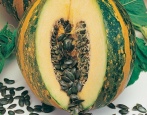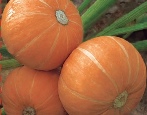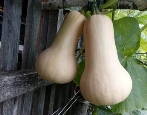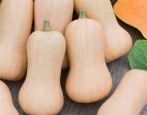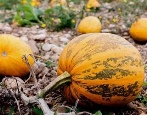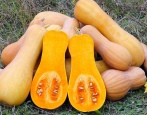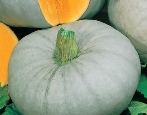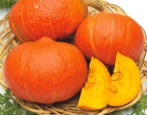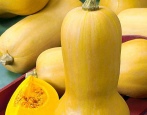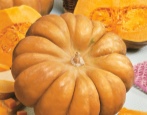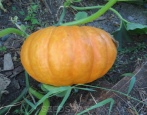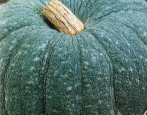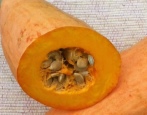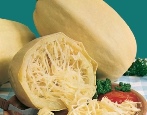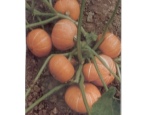
- Authors: Kushnereva V.P., Khimich G.A., Zharova V.P.
- Year of approval: 2008
- Lash length, m: 1,2
- Leaf color: green
- The form: flat-round
- Weight, kg: 1,1-1,5
- Coloration: pink, with red marbling pattern
- Bark: soft
- Color of the pulp: dark orange
- Pulp (consistency): crispy, medium-bodied and juicy
Olga is a large-fruited pumpkin variety bred by Russian breeders and approved for use in 2008. Despite the relative novelty, the variety is already quite popular among gardeners, and for those who do not yet dare to try to grow Olga on their site, we suggest studying this variety in more detail.
Description of the variety
Olga tolerates unfavorable weather conditions and has a high yield. Also, the fruits are characterized by a high level of transportability and keeping quality. You can store the vegetable until mid-March. For storage, the skin is cleaned with dry cloth and placed in a dark place where the temperature is + 8-15 degrees. It is recommended to grow the presented variety in the Central Region and the Central Black Earth Region. A feature of the variety is its tendency at a young age to form warts in places where the leaf petioles touched, but a little later the peel becomes denser.
Characteristics of the appearance of plants and fruits
It is a semi-bushy plant with lashes about 1.2 m long and medium-sized green leaves. Each bush is capable of producing 4-10 portioned fruits. The pumpkins are flat-round in shape, their weight is 1.1-1.5 kg, the peel is smooth, pink, with a pattern in the form of red marbling. Elliptical small whitish seeds are hidden in the dark orange pulp.
Purpose and taste
The pulp of the Olga variety is crispy, medium density, juicy, and sweet on the palate. The vegetable can be used for any type of processing, including freezing. Compact fruits can be stuffed with, for example, meat or porridge, and can also be used to make muffins or purees.
Ripening terms
From the beginning of germination to harvest, it takes about 85-100 days, which is typical for early maturing varieties. Fruit harvesting usually takes place in August-September.
Yield
When this variety is grown in the Central Region, the yield can reach 312-605 c / ha, when cultivated in the Central Black Earth Region - 182-331 c / ha.
Growing and care
The presented variety will feel comfortable in a garden bed, which is well lit by the sun. The abundance of light has a beneficial effect on the taste of future fruits. The land must be fertile, it must be prepared in the fall. To do this, the soil is dug up with organic matter, superphosphate and potassium sulfate are added.
It is allowed to grow Olga by seedlings. To do this, 1-2 seeds are planted in cups with moist and loose soil and placed in a warm place. A couple of times a week, the seedlings need watering, and they will be ready for transplanting at the age of 20-25 days.
More often, this variety is nevertheless sown directly into open ground. The optimal time for planting is May 20-June 10. The seeds are planted to a depth of 3-4 cm according to the scheme 100x100 cm. Further, caring for the plant consists in timely watering with warm water under the root and making additional fertilizing. As an additional nutrition, it is recommended to use complex fertilizers; you can add a little organic matter to the diet.
The hardened soil is loosened and weeds removed. After tying 4-10 pumpkins, pinch the tops of the shoots. 2-3 weeks after planting, the seedlings are thinned out, leaving the strongest specimens.
Disease and pest resistance
This variety has strong immunity against such common pumpkin diseases as anthracnose, fusarium wilting, powdery mildew, rot, and therefore does not need to be treated with chemicals and can be positioned as an environmentally friendly product.
Review overview
According to the observation of summer residents, the seeds of the Olga variety have excellent germination. Gardeners are attracted by simple maintenance, the resistance of the vegetable to adverse weather conditions, and also a bountiful harvest. The fruits are soft, sweet, easy to cut, however, contrary to the instructions of the producers, most pumpkins still cannot be stored until spring, even if all conditions are met.
